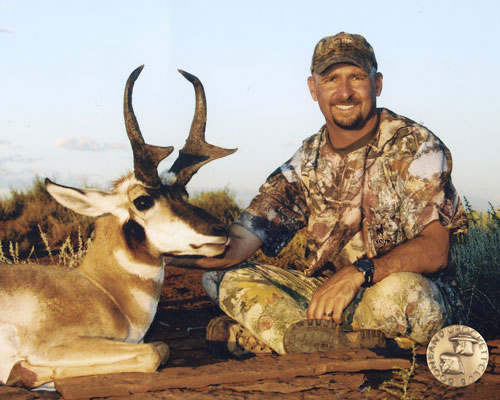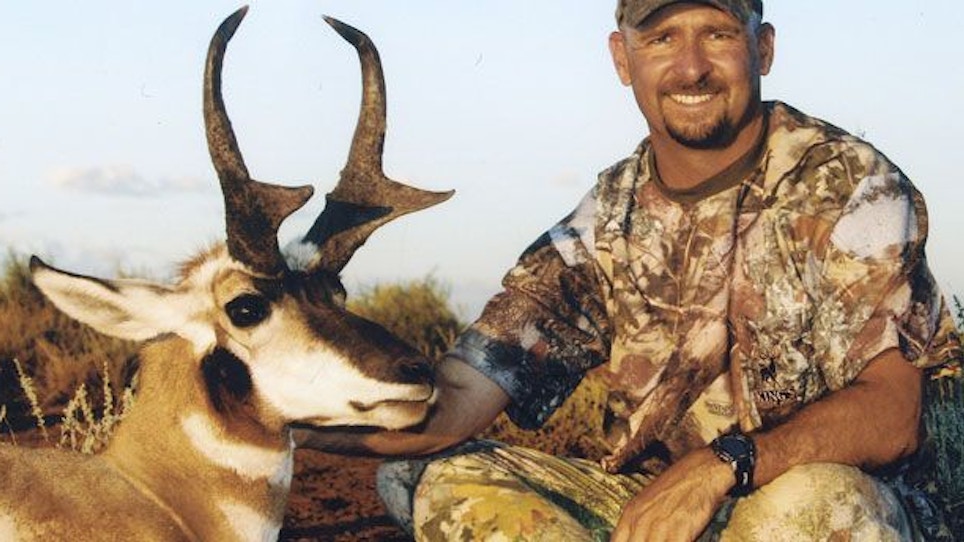 1. It is relatively easy to remove blood and hide tongues in your pictures. Both can draw attention away from the outstanding characteristics of your trophy.
1. It is relatively easy to remove blood and hide tongues in your pictures. Both can draw attention away from the outstanding characteristics of your trophy.
2. Sky, especially blue sky, is a great background for field photos. Sky-lining your trophy's antlers allows you to clearly capture the trophy quality of your animal. It also forces you to pose to the side of the animal, rather than directly behind the antlers, which often makes for a more interesting photo. For big critters like elk and moose, try a few shots standing beside your trophy with its antlers against the sky.
3. Trophy bears generally photograph best with their belly down and legs to the front and back, not on their sides. Shoot from a low angle. Hunters shouldn't stand over the bear. Instead, kneel to the rear or side. Photos of hanging bears often seem disrespectful to the animal, and sitting on the animal is unflattering to both bear and hunter.
4. Field photos are intended to capture memories of the hunted--and the hunt. Try to take pictures against vista scenery or habitat where the animal lived. Seeing the country where the hunt actually occurred will be another great memory for you in the years ahead.
5. Mountain rams are regal animals and positioning them with legs folded under as they are when bedded is a natural pose showing the utmost respect.
6. A one-on-one quest is most often associated with hunting, but not always. Family and friends may be involved. Maybe there's a young hunter. Or companion field judges to offer second opinions. Group photos add to these memories. The hunter should be the one closest to and holding their trophy. Participants should be distributed evenly around the trophy and hunter. Smiling faces are the final touch in capturing a hunt accomplished by committee.
7. Guns and bows are important parts of our hunts and memories. Posing with them is a natural, but safety is job one. Always make sure your firearm is unloaded and pointed in a safe direction for the photo taking. A rifle lying across antlers like a yardstick, and leaning a gun or bow on the animal, used to be popular poses. Today, simply holding your rifle or bow tends to make for the best composed, safest and most respectful photos.
8. A straight on, grinning-at-the-camera photo is a mandatory shot. But while you're shooting, try a few with you looking admiringly at your trophy. You might be surprised which pose stands out as your favorite.
9. Hunters wear caps. It's part of our culture. We might forget binoculars or cartridges, but when was the last time you forgot your cap? Problem is, they shade faces and create problems for photographers. All easy remedies cause other issues: 1.) Tip cap back--looks goofy plus squinting, 2.) Remove cap--hat head, 3.) Use a flash--blows out the exposure. If your camera has a fill flash, learn how to use it and try a few shots next time you notice your buddy's face in the dark.
10. If you're a student of the Boone and Crockett scoring system, you know length of tines matters. In fact, 69 percent of a buck's final score is wrapped into tine length. So if you've taken a buck that has the length, show it off. Take some profile photos. Frontal shots don't always do justice when it comes to length of points. Side views also help show off features such as palmation on caribou racks. Having photos of your trophy from angles other than straight on will help you reflect back on great trophies you have taken.
Read more great tips and enter the photo contest.






